For the circuit in find the potential difference between points a and b. 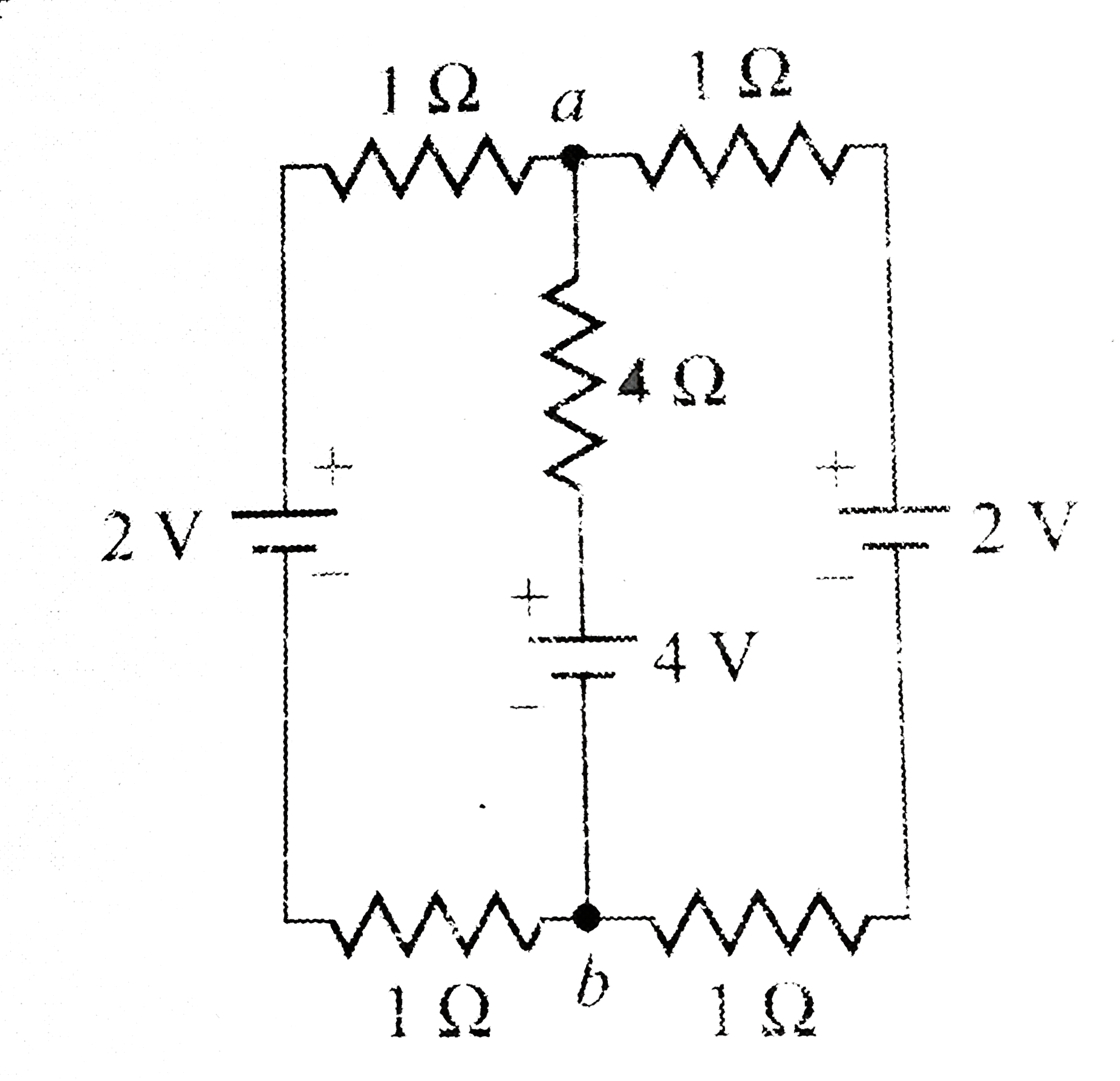
Applying Kirchhoff's law in any branch we get
4−4(2i)−i−2−I=0ori=0.2A

Va−Vb=4−(2i)=4−4(0.4)=2.4V
Topper's Solved these Questions
- BOOK - CENGAGE PHYSICS ENGLISHCHAPTER - ELECTRIC CURRENT AND CIRCUITEXERCISE - Subjective29videos
ELECTRIC CURRENT AND CIRCUIT
- BOOK - CENGAGE PHYSICS ENGLISHCHAPTER - ELECTRIC CURRENT AND CIRCUITEXERCISE - Single Correct72videos
ELECTRIC CURRENT AND CIRCUIT
- BOOK - CENGAGE PHYSICS ENGLISHCHAPTER - ELECTRIC CURRENT AND CIRCUITEXERCISE - Exercise 5.128videos
ELECTRIC CURRENT AND CIRCUIT
- BOOK - CENGAGE PHYSICS ENGLISHCHAPTER - ELECTRIC CURRENT & CIRCUITSEXERCISE - Kirchhoff s law and simple circuits15videos
ELECTRIC CURRENT & CIRCUITS
- BOOK - CENGAGE PHYSICS ENGLISHCHAPTER - ELECTRIC FLUX AND GAUSS LAWEXERCISE - MCQ s38videos
ELECTRIC FLUX AND GAUSS LAW
Similar Questions
Find theh potential difference between points a and b.
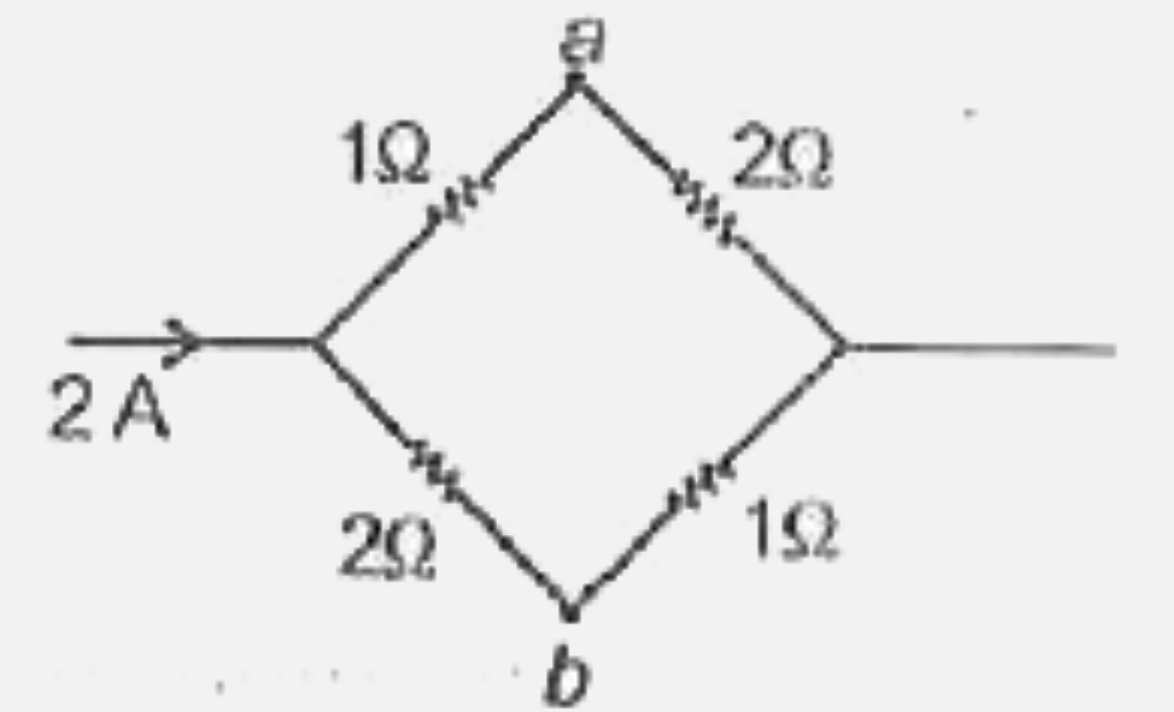 View Solution
View SolutionFor the circuit figure, find the potential difference between points a and b:
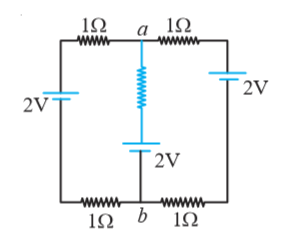 View Solution
View SolutionThe potential difference between points A and B is
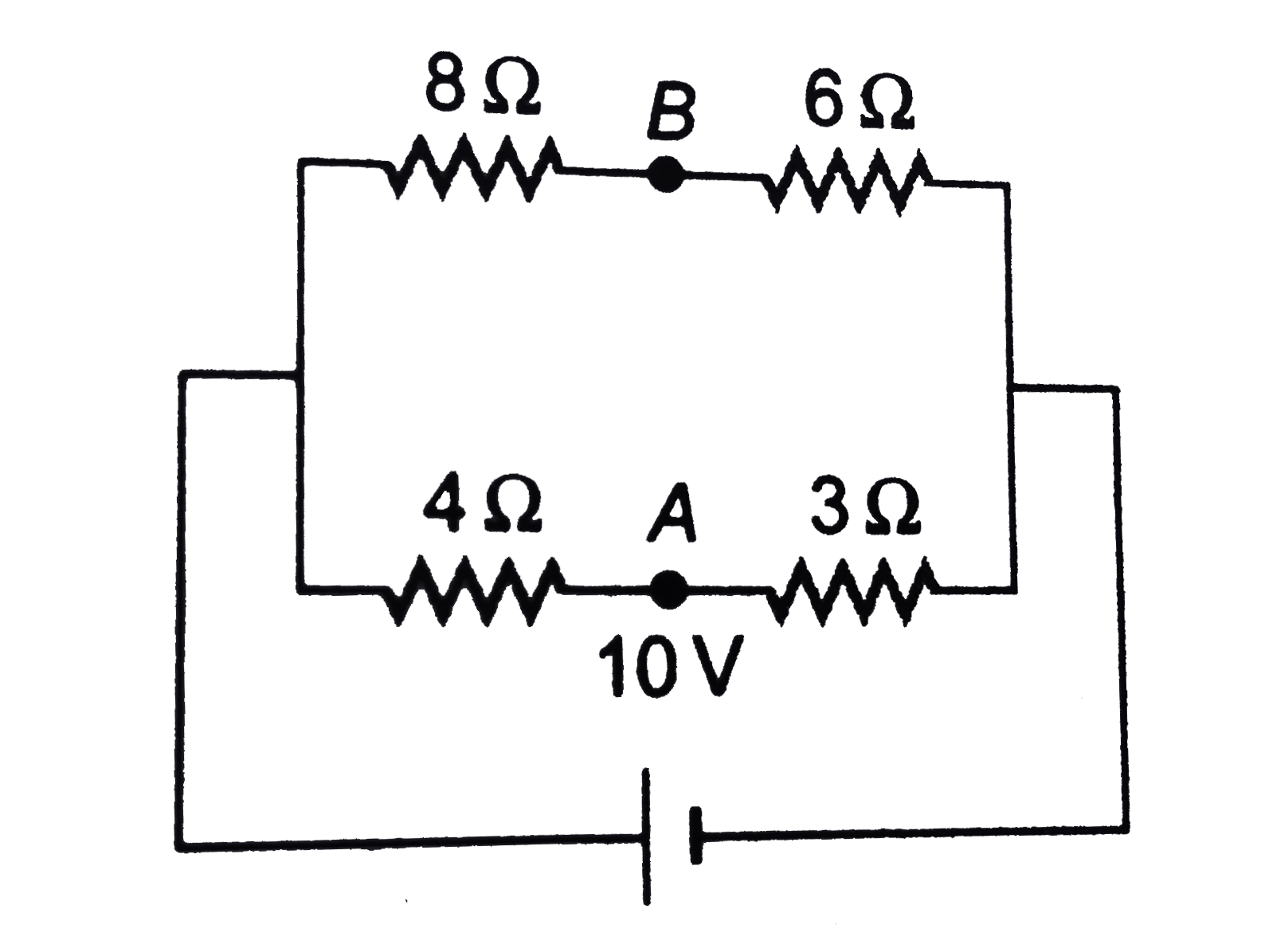 View Solution
View SolutionThe potential difference between points A and B is
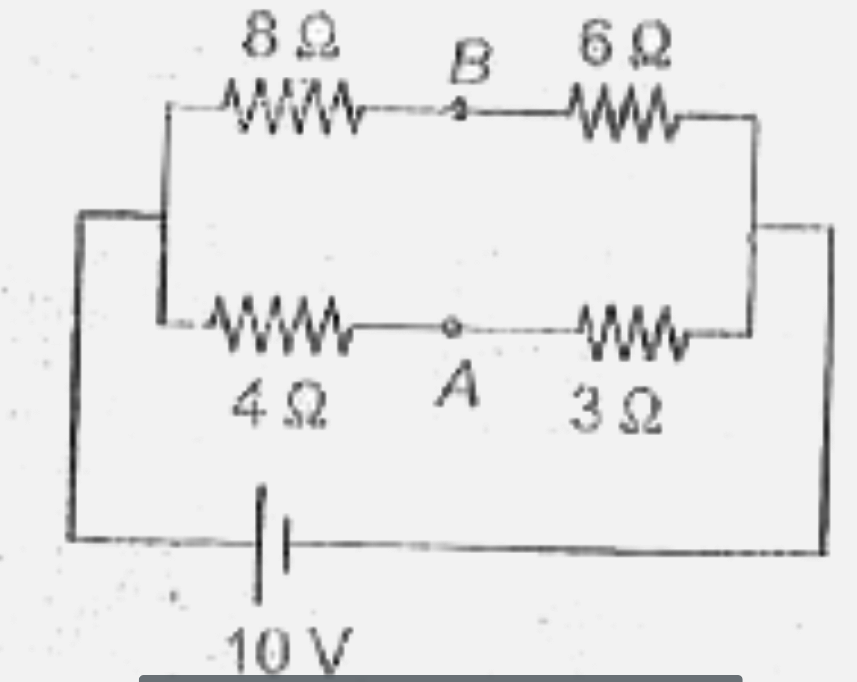 View Solution
View SolutionThe potential difference between points A and B is
 View Solution
View SolutionIn the circuit shown in the potential difference between the point a and b is 4V, Find the emf ε of the battery. Assume that before connecting the battery in the circuit, all the capacitors were uncharged.
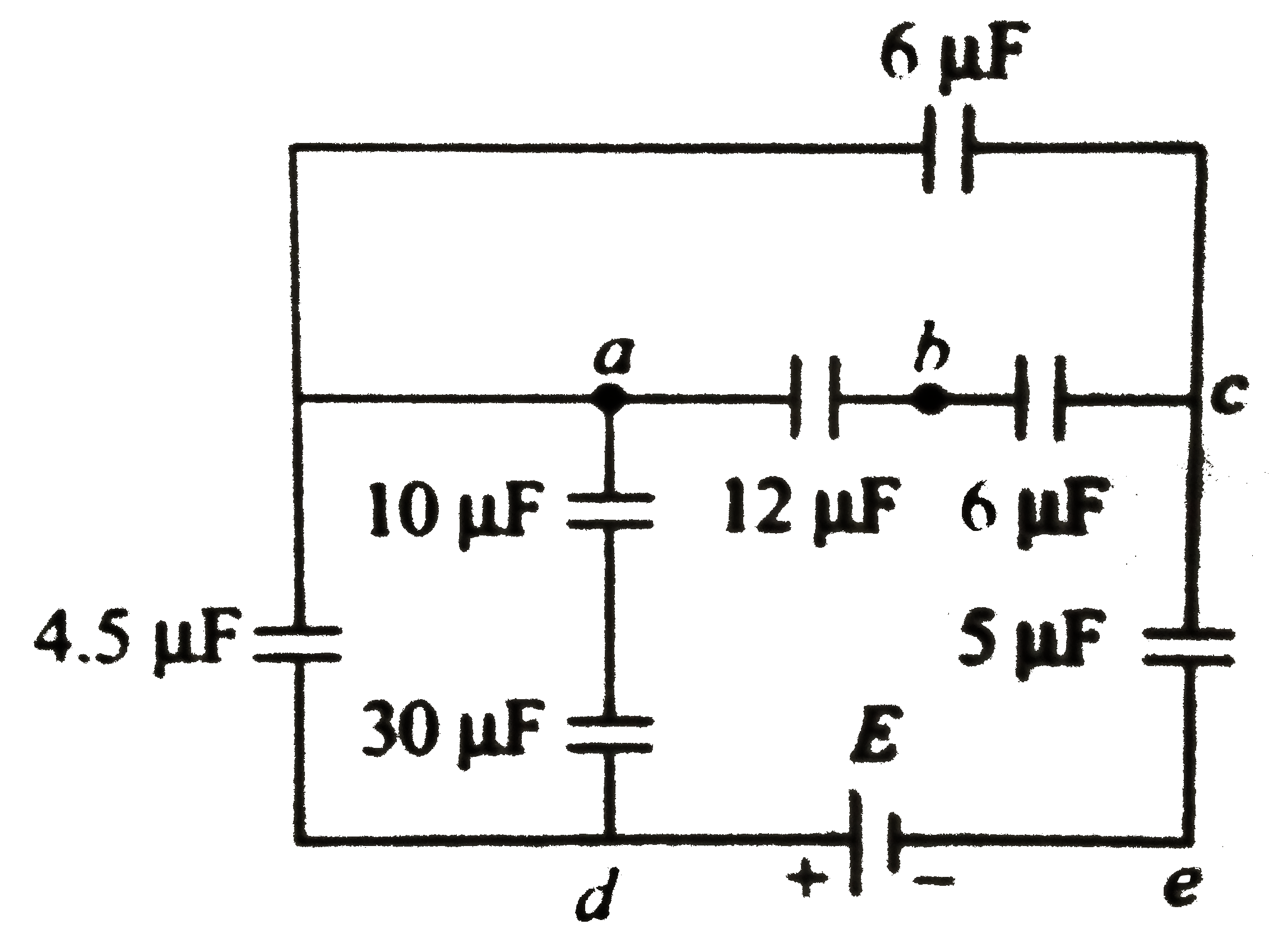 .View Solution
.View SolutionIn given circuit , the potential difference between points A and B is
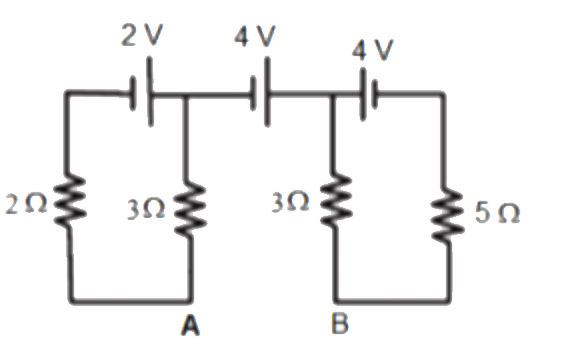 View Solution
View SolutionIf 100 volts of potential difference is applied between a and b in the circuit of , find the potential difference between candd.
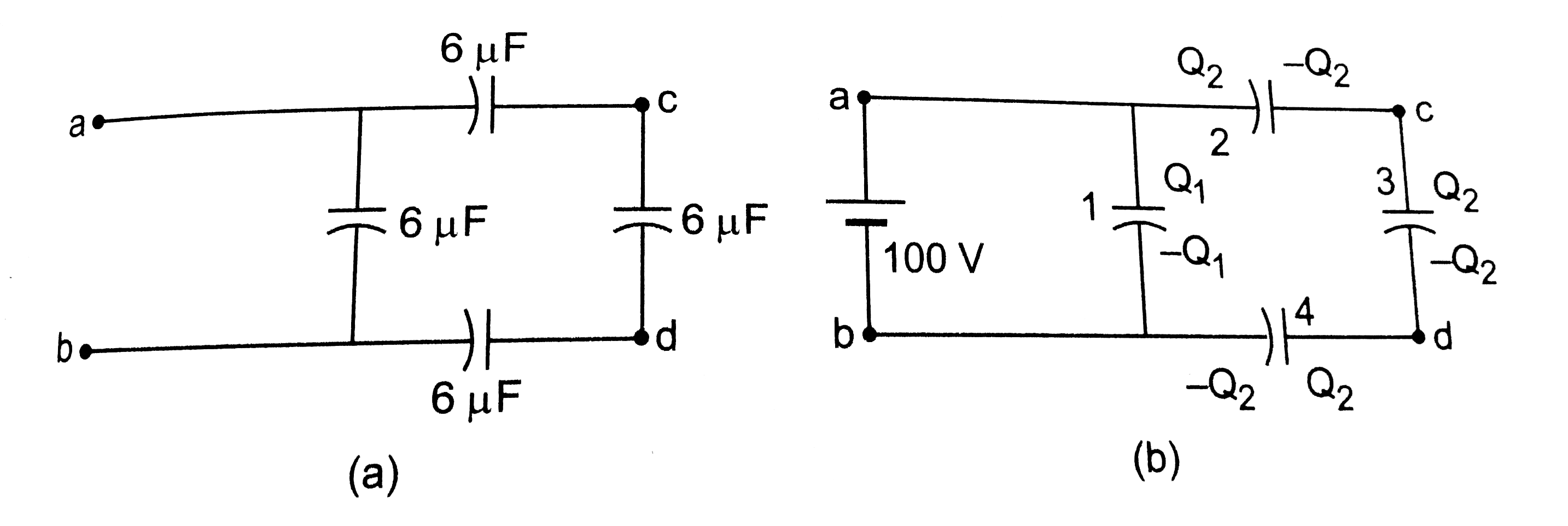 View Solution
View SolutionThe potential difference between the points A and B in the circuit shown is 16 V, Which is/are the correct statement(s) out of the following?
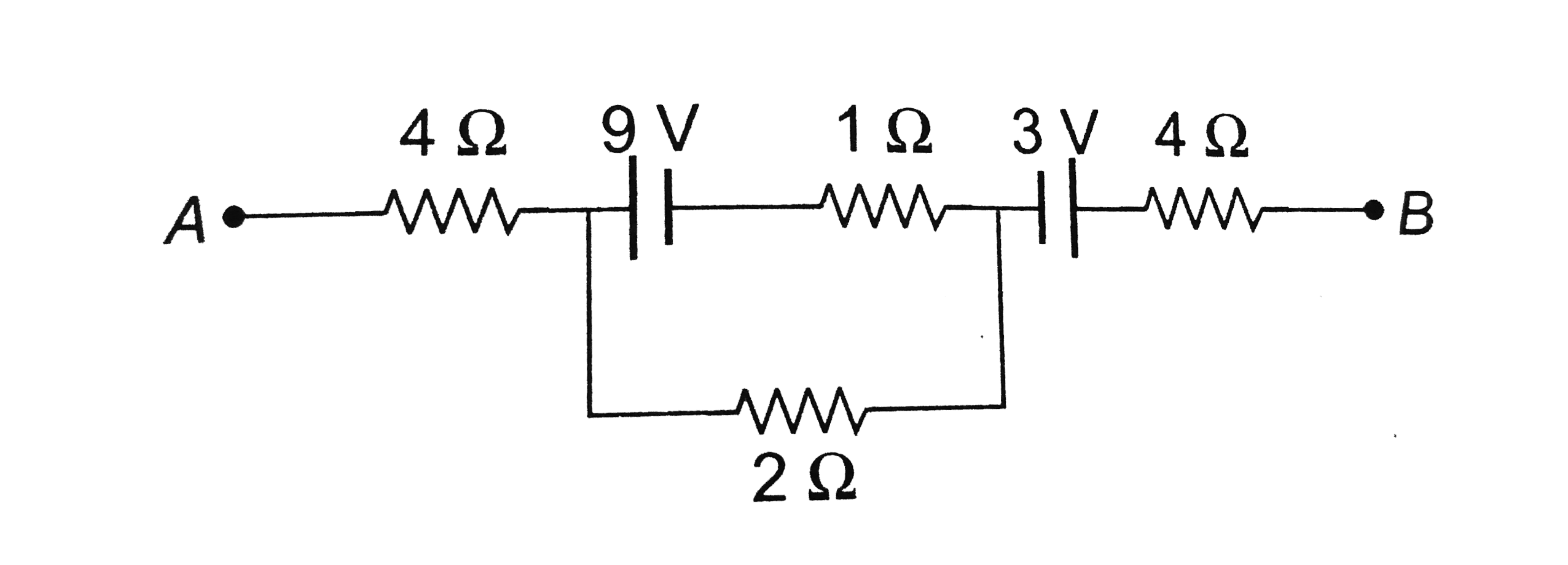 View Solution
View Solution(i) Find the potential difference between A and B.
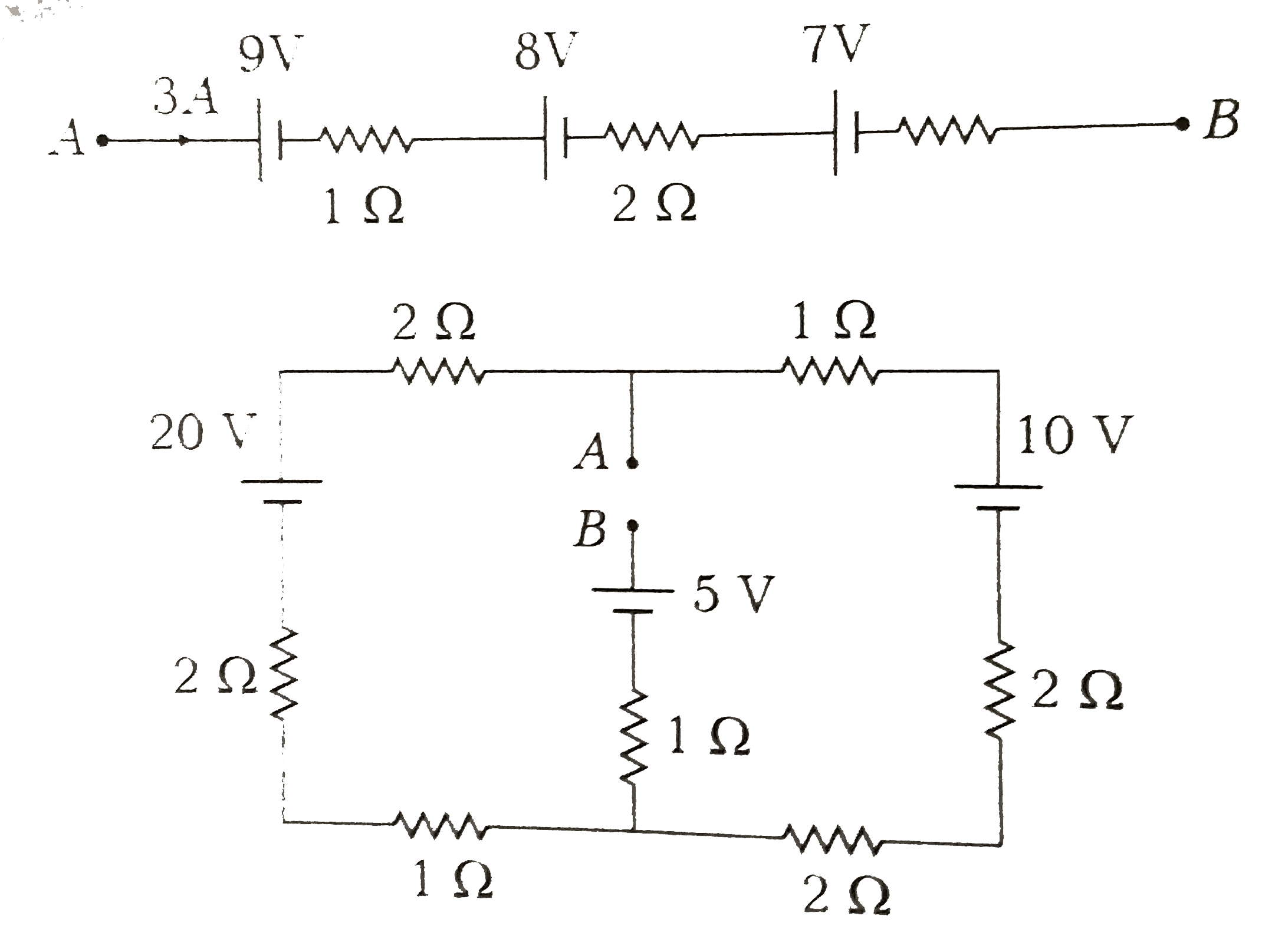 View Solution
View Solution

